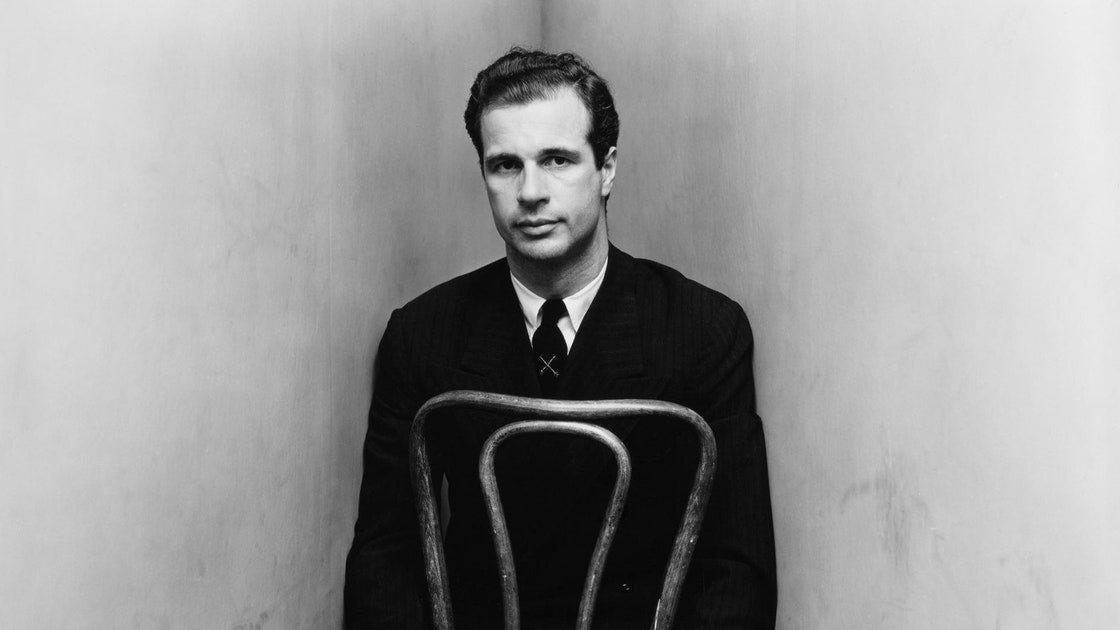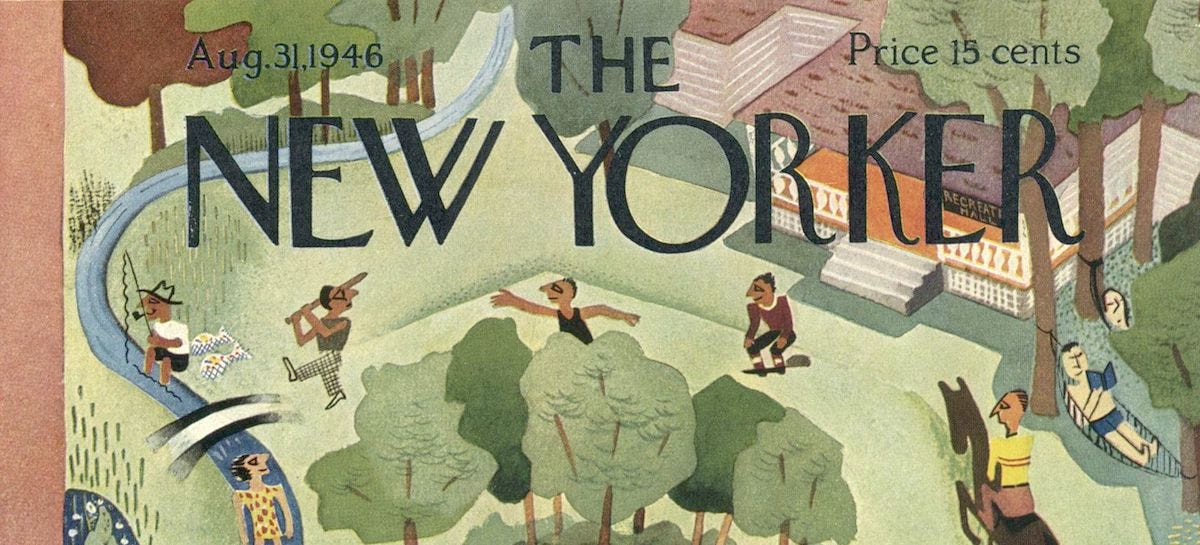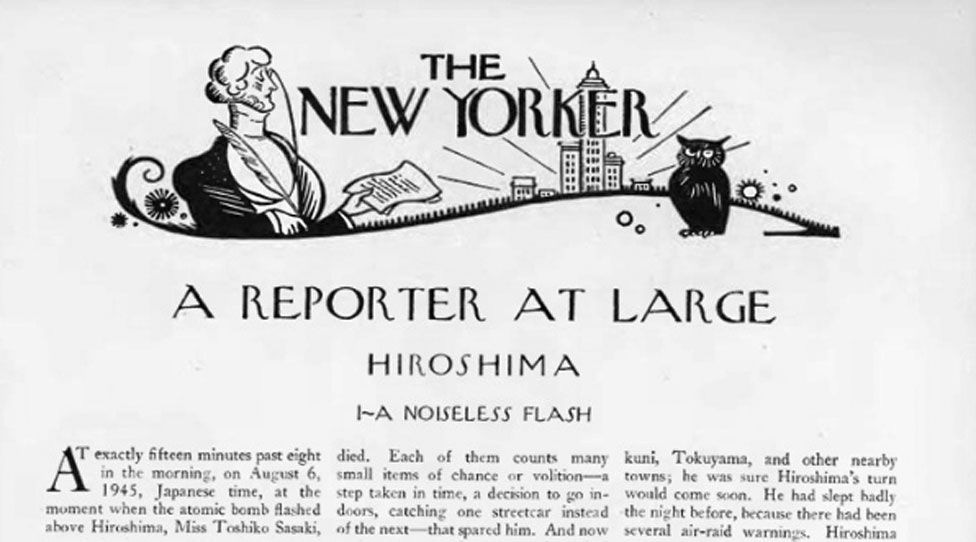Reprinted with permission from Greg Mitchell’s newsletter Oppenheimer: From Hiroshima to Hollywood.

I’ll be returning to my notes on the newly-published paperback version of Christopher Nolan’s screenplay for Oppenheimer tomorrow (here was my first report last week). Today, a look at how John Hersey came to write his Hiroshima. But first, you might want to follow this link to an important story in Wired today with the headline “The Dark History Oppenheimer Didn’t Show” and subhed: “Coming from the Congo, I knew where the essential ingredient for the atomic bombs was mined, even if everyone else seemed to ignore it.”
The closer we get to the bomb’s completion [in Oppenheimer], the more marbles go into the bowl. But there’s no mention in the film of where two-thirds of that uranium came from: a mine 24 stories deep, now in Congo’s Katanga, a mineral-rich area in the southeast.
As the marbles steadily filled the bowl onscreen, I kept seeing what was missing: Black miners hauling earth and stone to sort piles of radioactive ore by hand.

Seventy-seven years ago this week, John Hersey’s article titled simply “Hiroshima,” was readied for publication. It would comprise the entire feature space in the August 31, 1946, issue of The New Yorker. Many have called it the greatest, or at least the most important, magazine article of the past century. Its life was extended when it was soon published as a best-selling book that remains a classic today.
How did it come about?
War correspondent and novelist John Hersey, at the age of thirty-one, had already won a Pulitzer Prize for A Bell for Adano. Several months after the first atomic bomb was dropped over Hiroshima in August 1945, he had mentioned writing something about it to his New Yorker editor, William Shawn. Hersey had mixed feelings about the necessity of the first bomb but felt the attack on Nagasaki was “totally criminal.”
Hersey, who was born in China to Protestant missionaries and covered the Pacific war for Henry Luce and Time-Life, imagined an article documenting the power of the new bomb and the destruction it caused to one city. Ultimately he decided he would focus on what happened not to buildings but to humans. He just needed to find a form to tell the story.
Shawn was enthusiastic and urged him not to rush since, months after the epochal events, “No one has even touched” the subject. This was, sadly, true. And the first Hollywood drama about the bomb, from MGM, The Beginning or the End, was in the process of being transformed from an urgent warning by atomic scientists to pro-bomb propaganda under pressure from the military and White House (see my recent book). J. Robert Oppenheimer would sign off on a script rife with falsehoods and okay his portrayal in the movie.
On the way to the Far East, Hersey had read Thornton Wilder’s novel The Bridge of San Luis Rey, which explored an 18th century disaster in Peru through the eyes of a handful of victims. Hersey sensed this might be the best way to personalize the far more vast and deadly Hiroshima story. Arriving in Hiroshima in May, 1946, despite deep restrictions on journalists imposed by Occupation authorities in Tokyo, he interviewed several dozen survivors, before settling on six. They told powerful stories but were not exactly representative of the city as a whole: two doctors, one Catholic priest and one Methodist minister, and two working women. (It might also be said that they were not typical because these six had survived.) Their movements in the shattered city occasionally crossed, one of the novelistic requirements the author had set.
Conducting the interviews and research, with a translator at his side, Hersey was “terrified all the time,” he later explained. Hersey had seen the devastation of war many times before, most recently in China and Tokyo, but Hiroshima was different: These ruins had been created by one weapon in one instant, a horrific notion. If Hersey felt that in the city nine months later, how must the people who were there at the time experienced it? So he set out to struggle to understand. And this was still in a period when U.S. officials and the military were still downplaying – some would say, covering up – the effects of radiation on the Japanese victims.

When a new issue of The New Yorker arrived near the end of August, the cover featured a generic picnic scene, with people sunbathing, hiking, riding horses. The first few pages held the usual ads for nylons and women’s clothing from Lord & Taylor or Bergdorf Goodman. But there was something unique about this issue: there was no “Talk of the Town,” few cartoons, no book reviews. The entire issue was devoted to one feature, 68 pages long (some thirty thousand words), written by Hersey. His temporary titles for the piece, “Events at Hiroshima” or “Some Experiences at Hiroshima,” had fallen away in favor of the simple and powerful: “Hiroshima.”
In a note to readers, the editors explained that they had taken this extraordinary step based on the conviction that most people still did not recognize the profoundly different power of this weapon – “the almost total obliteration of a city” – and now “might well take time to consider the terrible implications of its use.” Hersey’s first sentence set the scene like none other to date: “At exactly fifteen minutes past eight in the morning, on August 6, 1945, Japanese time, at the moment when the atomic bomb flashed above Hiroshima, Miss Toshiko Sasaki, a clerk in the personnel department of the East Asia Tin Works, had just sat down at her place in the plant office and was turning her head to speak to the girl at the next desk.” He continued:
“Everything fell, and Miss Sasaki lost consciousness. The ceiling dropped suddenly and the wooden floor above collapsed in splinters and the people there came down and the roof above them gave way; but principally and first of all, the bookcases right behind her swooped forward and the contents threw her down, with her left leg horribly twisted and breaking underneath her. There, in the tin factory, in the first moments of the atomic age, a human being was crushed by books.”
Hersey had submitted the article as a four-part series, but Shawn, who edited it, proposed running it in one issue for maximum impact (after it was vetted and approved at the Pentagon and by General Leslie R. Groves himself). Mission accomplished. The article caused an immediate sensation. All copies sold out on newsstands. The mayor of Princeton, New Jersey, asked every resident to read it. Newspapers requested reprint rights, which Hersey granted if proceeds went to the Red Cross. Plans were announced for narrating the entire story over the ABC radio network on four consecutive evenings. The New Yorker was flooded with requests for extra copies – Albert Einstein, for example, wanted one thousand to distribute to members of his Emergency Committee of Atomic Scientists.
There is no record of any response by J. Robert Oppenheimer. Earlier that month he had visited the set of that MGM movie The Beginning or the End, signifying his stamp of approval.
When Einstein, on the other hand, sent out copies of “Hiroshima” he included in his cover note, “I believe Mr. Hersey has given a true picture of the appalling effect on human beings. . . . And this picture has implications for the future of mankind which must deeply concern all responsible men and women.”
Coming, in Part II: More of the reaction and aftermath.

Thanks for reading Oppenheimer: From Hiroshima to Hollywood! Subscribe for free to receive new posts and support my work.
Greg Mitchell is the author of a dozen books, including “Hiroshima in America,” and the recent award-winning The Beginning or the End: How Hollywood – and America – Learned to Stop Worrying and Love the Bomb, and has directed three documentary films since 2021, including two for PBS (plus award-winning “Atomic Cover-up”). He has written widely about the atomic bomb and atomic bombings, and their aftermath, for over forty years. He writes often at Oppenheimer: From Hiroshima to Hollywood.




Just listened to the audiobook – Hiroshima. Gut-wrenching ……
I feel sorry for the people in Nagasaki and Hiroshima that suffered from the blasts and the after effects of the war. The USA is lucky it never suffered from WMD’s being used against its people or nuclear bombs being dropped on them.
The USA is also lucky no wars after the 19th Century were fought on its soil.